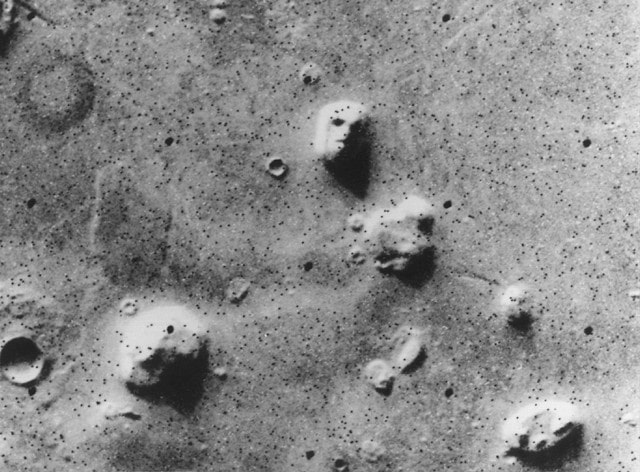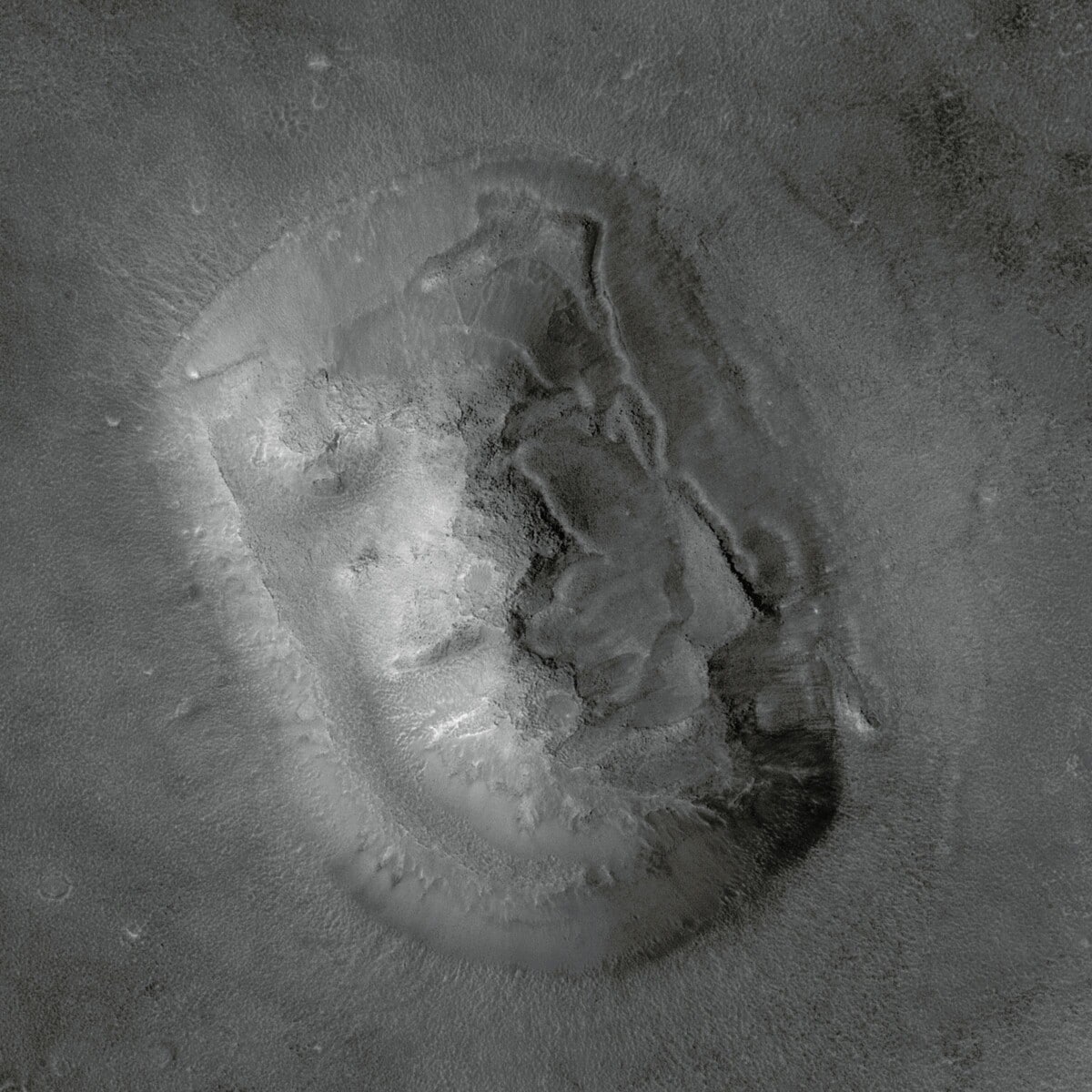
In 1976, the Viking 1 orbiter photographed a remarkable mountain on Mars. This mountain was shaped like a face. Was this an alien work of art or an optical illusion?
The planet Mars has captured the imagination for centuries. Could there be life on the red planet? Or are we all alone in the solar system? It’s hard to imagine now, but before the 1960s, scientists knew very little about Earth’s sister. Several attempts were made to send a spacecraft to Mars, but several missions failed. It wasn’t until 1965 that the US Mariner 4 managed to fly past the red planet and we learned more about the fourth planet of the solar system. Ten years later, the Viking 1 lander became the first spacecraft to set foot on Mars, and we were able to see unique images from the Martian surface for the first time.
In the search for a suitable landing site, the Viking 1 orbiter photographed several areas on Mars, including Cydonia. One of the photos showed a table mountain with a human face. The photo appeared in all the newspapers and was seen by many people as proof of the existence of life on Mars. Of course, NASA scientists knew better and thought from the start that the face was an illusion caused by light and shadow. This is also known as pareidolia.

The famous mountain Cydonia Mensa on Mars, better known as the ‘Face on Mars’.
What is pareidolia?
Pareidolia is a psychological phenomenon in which faces are recognized in everyday objects. That’s because the human brain has a strong tendency to make something recognizable out of everything. This is useful when recognizing shapes that may indicate danger, such as the silhouette of a predator. But sometimes our brain goes a little too fast and sees connections or patterns that aren’t there. For example, some people see all kinds of animals in clouds or, for example, a face in the moon. Incidentally, there is also a phenomenon called auditory pareidolia. In that case you will hear a mondegreen (a so-called ‘mama apple juice’), such as “what is that zebra dog for” in Kaoma’s Lambada.
Optical illusion
Eventually better pictures were taken of the Face on Mars, for instance by the Mars Odyssey in 2001. You can see this picture below. And guess what: it is indeed an optical illusion. Cydonia Mensa is an ordinary two kilometer long eroded table mountain. Not a creation by Martians, but after 45 years the very first photo still appeals to the imagination.

Face of Gandhi, a secret base and more finds on Mars
In recent decades, more optical illusions have been spotted on Mars, such as the face of Gandhi and a secret base. In 2010, the Mars Reconnaissance Orbiter even photographed trees on the red planet. This delivers